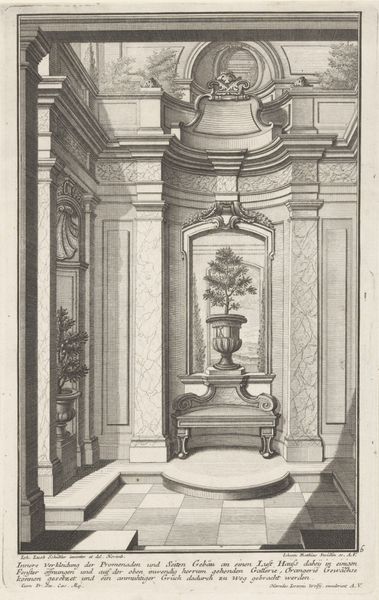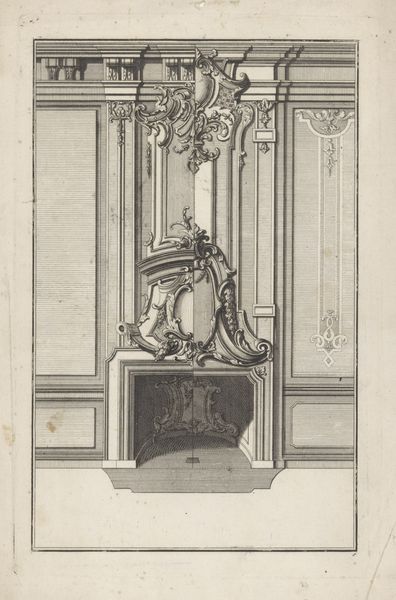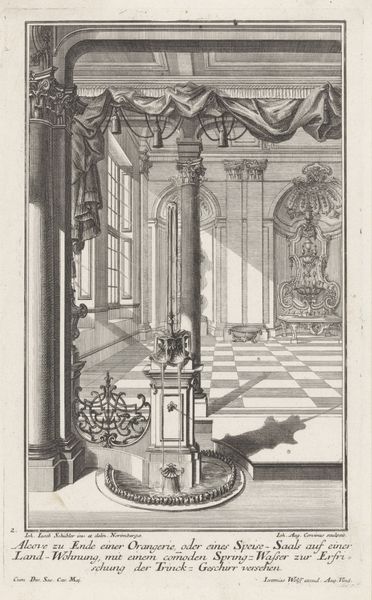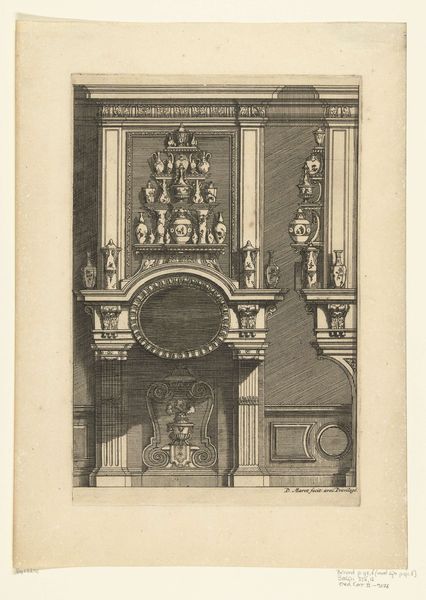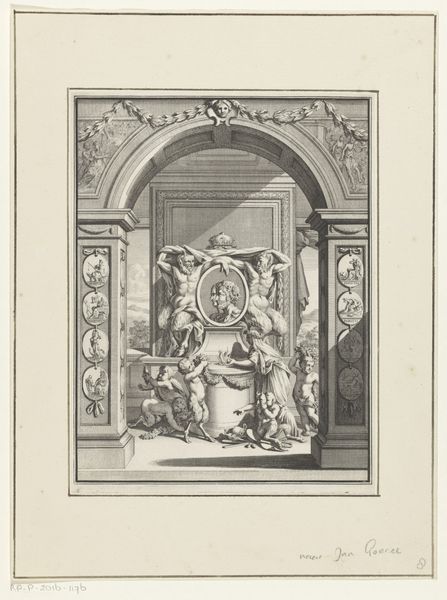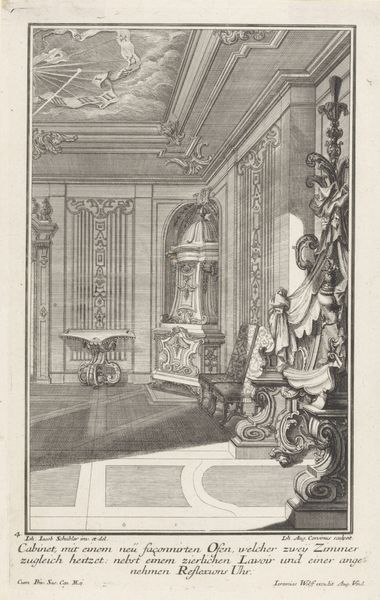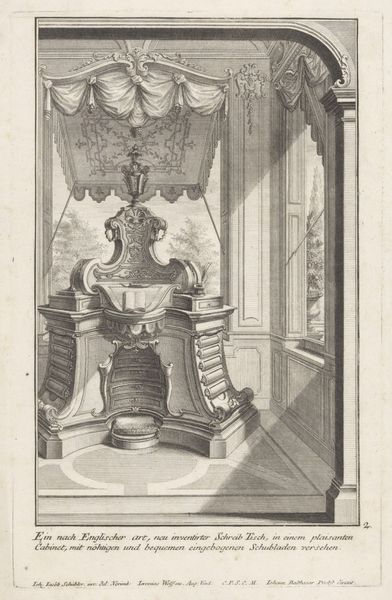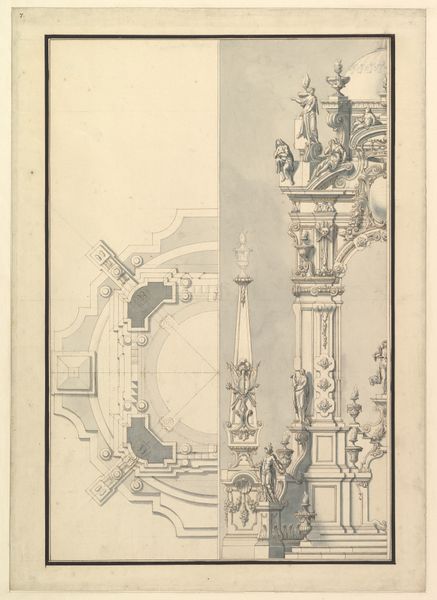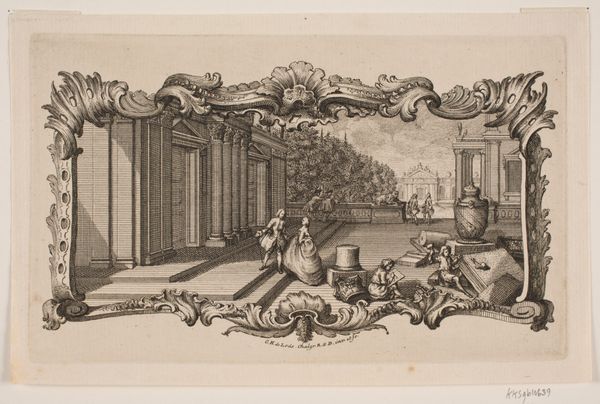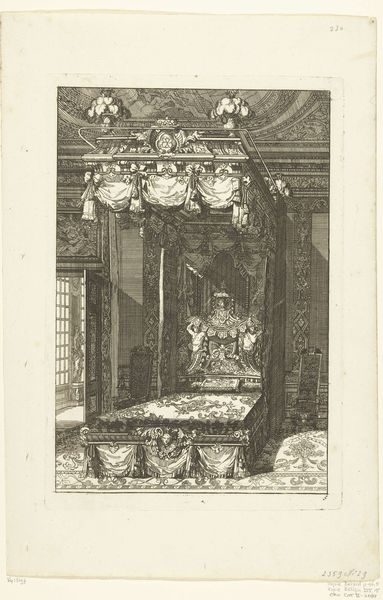
print, engraving
#
baroque
# print
#
landscape
#
cityscape
#
engraving
Dimensions: height 291 mm, width 178 mm
Copyright: Rijks Museum: Open Domain
Georg Lichtensteger made this print of a fountain and vase sometime in the 1700s, rendered with etching and engraving. These are printmaking techniques dependent on metal, acid, and considerable skill. Notice the intricate detail, especially on the vase itself, with its layers of ornament. Lichtensteger would have first coated a metal plate with wax, then carefully drawn through it with a sharp needle. Acid would then have been applied, biting into the exposed metal. This painstaking process allowed for the transfer of the image onto paper. In Lichtensteger's time, prints like these played a crucial role in disseminating design ideas. They weren't just art objects, but tools for architects, garden designers, and patrons of the arts. The print is not just an image of a fountain, but a symbol of wealth, taste, and the power of design to shape the world around us. It's a reminder that even seemingly decorative objects have a deep connection to labor, materials, and the social context in which they were made.
Comments
No comments
Be the first to comment and join the conversation on the ultimate creative platform.

